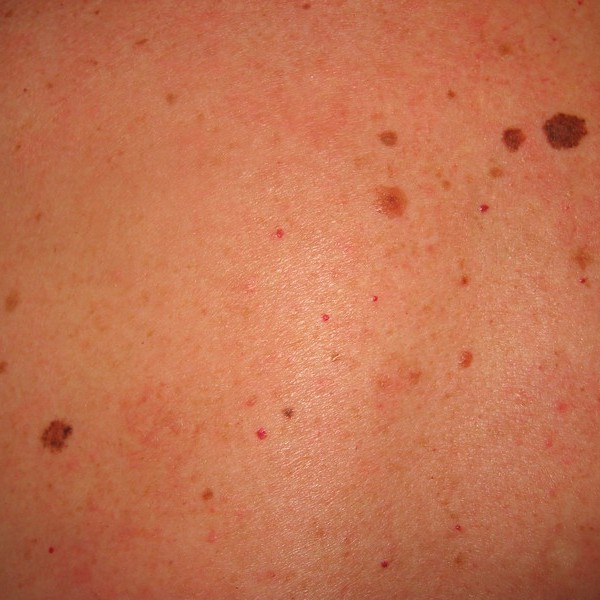2024/04/20 printed from http://dermboard.org All Rights Reserved

What is a mole?
A mole is a common name for a melanocytic nevus, which is a harmless cluster of melanocytes (cells that give color to the skin). However, rarely moles can change and become cancerous, so it is important to report to your health care provider if any mole on your skin has started changing colors, shapes, size, or if it has become painful, itchy or started bleeding.
What are the types of moles?
There are 3 main types of moles:
- Junctional nevus – this is a mole that is in the most superficial layer of the skin. It usually looks like a flat, tan to dark-brown spot on the skin.
- Compound nevus – this is a mole that is in the most superficial layer of the skin and deeper underneath. It usually looks like a tan to dark-brown bump on the skin.
- Intradermal nevus – this is a mole that is under the most superficial skin layer. It usually looks like a skin-colored, round to oval bump on the skin.
Special types of moles are:
- Congenital melanocytic nevus – this is a mole that has been present since birth.
- Dysplastic or atypical nevus – this is a mole that has irregular shape, several shades of color, so it has similarities with a melanoma (type of skin cancer). Therefore, it is easy to confuse it with melanoma, but it is harmless compared to melanoma. However, people with such moles have higher chances of developing melanoma (3 times to 20 times higher risk compared to people without such moles).
- Spitz nevus – this is a mole that is usually found in children. It usually looks like a red-brown to dark-brown bump on the skin. This one under microscope can look like a melanoma, but it is harmless compared to melanoma.
- Blue nevus – this is a mole that is under the most superficial skin layer. It usually looks like a black-blue to gray, round to oval, flat spot, or raised bump on the skin.
Should I be worried about my moles?
You should not worry, but you should check them over yourself every 3 months for any changes, and avoid exposure to ultraviolet radiation such as sun and indoor tanning devices. Very useful is ABCDEF melanoma rule (see your health care provider if any is present):
- A stands for Asymmetry – One part does not look like the other part.
- B stands for Border – Jagged, scalloped or uneven edge or border.
- C stands for Color – Has different colors (different shades of brown, black, white, blue and/or red).
- D stands for Diameter – It is larger than the eraser at the end of a pencil (but it can be smaller).
- E stands for Evolving (i.e. changing)  – Changing its size, color, or shape over time.
- F stands for Feel – Itching, pain, soreness (but it can totally be without any feel to it).

Click on the image to enlarge. Reprinted with permission from the American Academy of Dermatology. All rights reserved.
When should I see my health care provider?
If you notice any mole, spot or bump that has any feature described in the above ABCDEF melanoma rule, you should see your health care provider as soon as possible.
